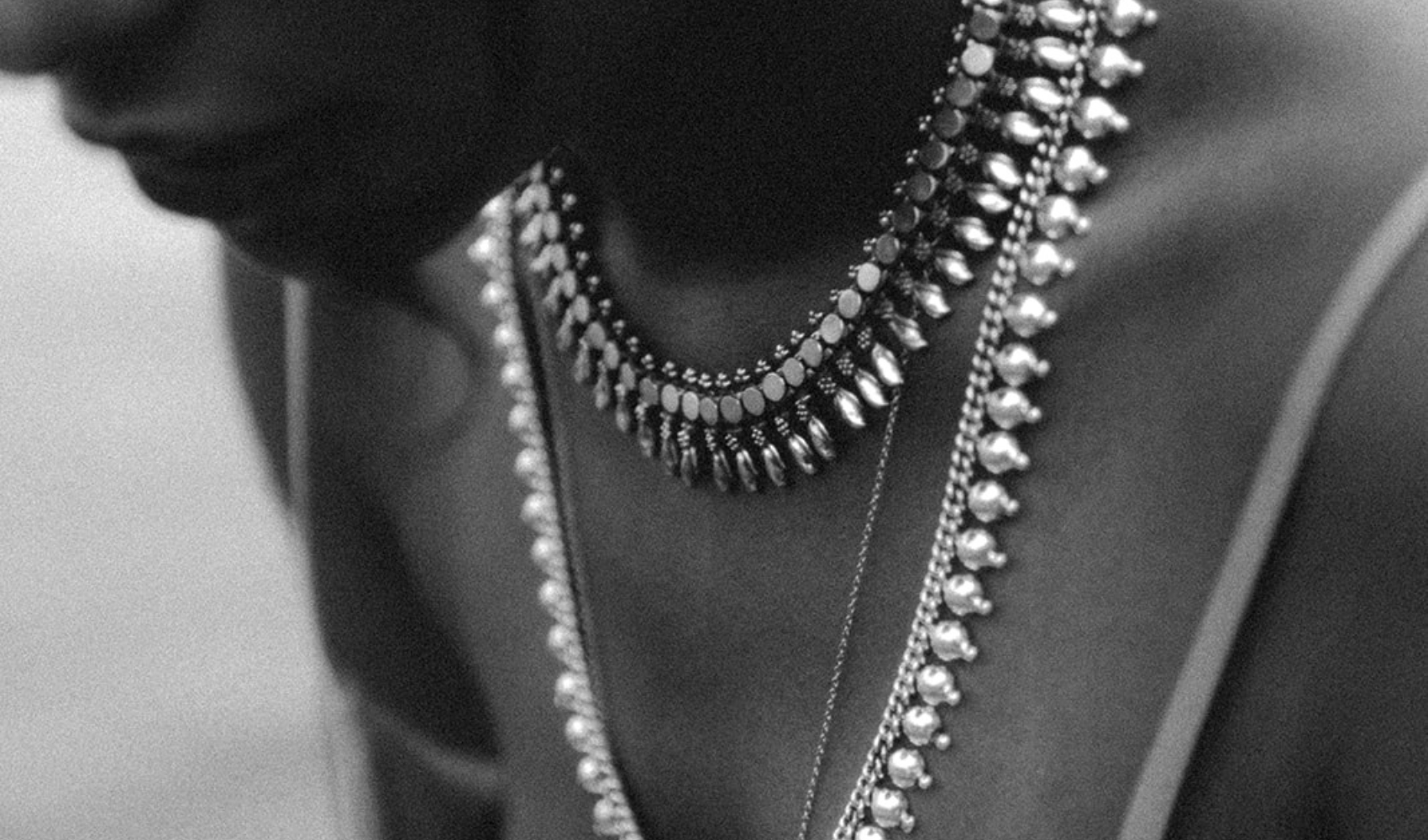In my perpetual quest for meaning, I invariably find refuge in explaining the inexplicable. Unveiling the profound nature of jewelry involves attributing tangible meaning to the intangible. By deconstructing the world and the years, we achieve this, one word at a time.
In ancient times, wearing jewelry was a way of expressing a connection with the divine. Concepts of purity, brilliance, and divinity were closely intertwined and interchangeable. Thus, the brightness of certain metals embodied the promise of sacred and venerable properties.
Adorned with forms, emblems, and symbols associated with the divine, some jewelry allowed the wearer to invoke, represent, connect, and even merge with divinity. As instruments of manifestation, these ritually charged jewels operated as agents of transformation within the bodies they adorned.
Jewelry and Magic
Magic is tangible. It represents a way of influencing the natural world through rituals involving a deep understanding of this world. Natural rhythm plays a central role in this practice. The ultimate goal of magic is to comprehend the natural world and exert influence over it.
In ancient times, magic and science were allies, harmoniously blending through traditional medicine, remedies, and inscriptions on amulets.
The aim: to preserve liminal spaces.
Doors adorned with symbols protect homes from external influences. Some rituals conclude at specific times to guard against liminal hours. Regarding jewelry, they play a crucial role as protective amulets, strategically positioned on these intermediate zones between the wearer and the external world.
Protective jewelry takes various forms, colors, and designs, aiming to attract specific virtues, wishes, or conditions. Perfection attracts the evil eye, hence the deliberate inclusion of variations and imperfections in jewelry.
While some dazzling jewelry is designed to confound malevolent spirits and repel them, others, placed near orifices such as nose piercings, serve to protect the wearer from any undesirable entities.
Jewelry, Animism, and Agency
Animism, derived from the Latin "anima" meaning "soul," represents the tendency to attribute animated essence, a soul force, to certain non-living entities.
In a naturalistic perspective (our current Western society), animism is often categorized as supernatural. This approach tends to avoid in-depth examination, as it poses questions for which we have no tangible answers, sometimes leading to reactions of skepticism ("it's not true").
Conversely, from an animist point of view, animism does not fall into the realm of the supernatural. It is not merely a metaphor but rather an authentic and lived experience. This perspective recognizes the reality of the intimate connection between humans and the surrounding world, transcending the traditional barrier between the natural and anything beyond the natural world.
In an animist context, the body is the sanctuary of the soul, a canvas of identity and evolution. Animist societies attach deep meaning to their adornments. Although aesthetics and symbols may differ from one culture to another, the common element lies in agency.
Agency is the power to act, the ability to influence and transform the world. For animist cultures, each adornment induces a transformation. The jewel is perceived as an amulet endowed with a soul and power unfolding through rituals.
In our modern era, it is possible to revive these rituals! To activate a jewel, we can imbue it with energy and intention, whether through prayer, meditation, visualization, singing, dancing, movement, etc. The jewel then becomes a materialization of the intention expressed during the ritual.
Discovering animism offers us the opportunity to engage with the world with enhanced depth and consciousness. Living life with awareness and intention is also an act of love for oneself and others.
Adornments, Belonging, and Identity
Rituals involving jewelry play a crucial role in forging a connection between the jewel and identity. Through intentional ceremonies, these adornments become catalysts for change, marking significant passages in an individual's life and fostering both spiritual and psychological growth.
Far more than a collection of prestigious objects, these ritually charged jewels contribute to shaping the identity of those who wear them.
From the Body to Metals
Jewelry and tattoos share a common essence: they define themselves through connection and interaction with the body.
This poetry of the skin, this redefinition of the body, acts as a mirror: everything not inherently "human" does not necessarily reduce to a "lifeless" existence.
The demarcation between the body and the jewelry that adorns it proves complex. The body finds its existence in symbiosis with its jewelry, and reciprocally, the jewel draws its meaning and energy from the body. The agency of the jewel precisely rests on this interdependence.
When we adorn ourselves, we engage in an act of honoring our bodies. Choosing intentionally crafted pieces opens a portal of connection with every person, energy, and material involved in the creation process. By ritualizing the ancient art of beauty and ornamentation, we weave profound connections with ourselves and the world around us.
My invitation to you is to embark on this profound journey of discovery with us.
© NOIR KĀLA
Sources :
Bedouin Silver, Magic of Jewellery, 2021
Nicolas Journet, L'animisme est-il une religion ? Entretien avec Philippe Descola, Sciences Humaines, 2007
The Met, Jewely - The body transformed, 2018
Photographie : Bianca Des Jardins


